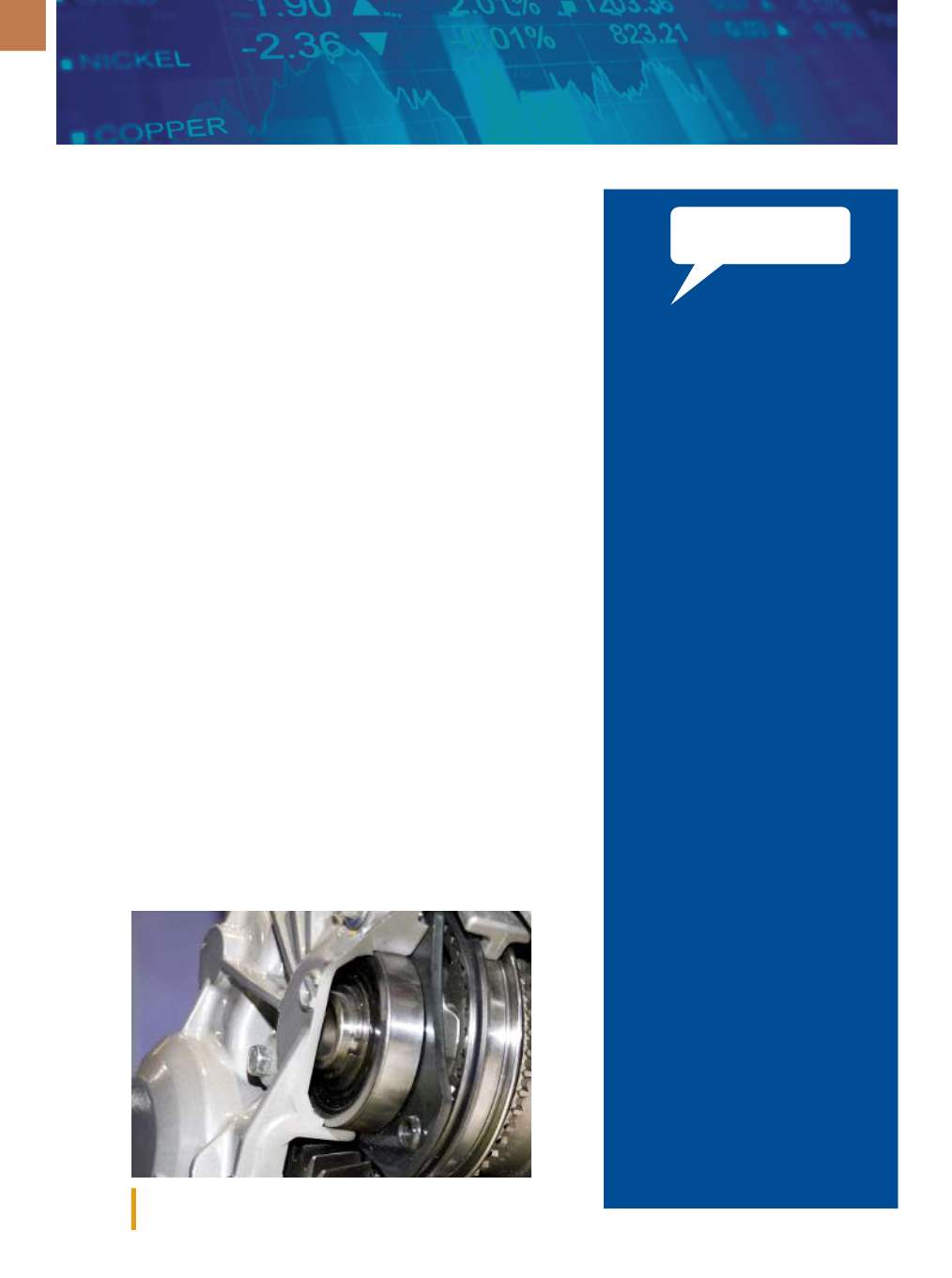

6
MARKET SPOTLIGHT
A D V A N C E D M A T E R I A L S & P R O C E S S E S | O C T O B E R 2 0 1 6
FEEDBACK
MAGNESIUM MARKET SEES STEADY GROWTH
Global growth in the magnesium
market is expected to average 3.4% per
year reaching almost 1.2 Mt per year
by 2020, according to a new report,
“Magnesium Metal: Global Industry,
Markets & Outlook, 12th Edition” from
Roskill Information Services Ltd., Lon-
don. Aluminum alloys and die casting
are predicted to be the fastest grow-
ing markets, both at roughly 4% per
year. However, the main factor affect-
ing magnesium demand will likely be
automobile use, due to both greater
unit consumption and increased vehi-
cle production. Development of mag-
nesium metal with a dense uniform
dispersion of silicon carbide nanopar-
ticles could have significant long-term
impact on demand. In addition, mag-
nesium-ion rechargeable batteries that
have twice the capacity and energy
density of lithium ion batteries could
also spur growth.
In the first quarter of 2016, a
six-year decline in magnesium prices
appears to have leveled out at $2000
per ton, based on production costs in
China where nearly 80% of the world’s
magnesium is produced. As prices
moved below this level at the end of
2015, resistance from producers cou-
pled with firming coal prices and better
COMPOSITE DIE IDEA
I amamechanical engineer with amas-
ter’s degree inmetallurgy, specialized in
welding engineering. Upon retiring several
years ago, I set up a website (www.weld-
ing-advisers.com) to provide open welding
information, consultation, and a free
monthly newsletter. Recently, I applied for
a patent on a newmethod of constructing
a composite die for forging and forming.
I developed the patent to answer, among
others, the following questions:
• Is it possible to build forging or
forming dies in less time than
with
the usual way?
• Is it feasible not to be constrained by
long lead times for tool steel blocks?
• Could a standard, in-stock tool steel
shape be used to make different dies?
• Would simpler and cheaper hardened
tool steels perform adequately for
demanding dies?
I believe my idea would provide some
practical benefits in the cost and time of
building certain classes of dies. However,
I have no real proof, as no hardware was
ever built according to the principles I
developed. I would like to share my idea
with anyone in the industry who might be
interested. A short note describing the es-
sential aspects of the construction of such
dies is available onmy website at www. welding-advisers.com/Composite-Die- Description.html. I am very interested inreceiving comments and feedback from
readers who are curious about my idea.
Elia Levi
www.welding-advisers.com/contact.htmlWe welcome all comments
and suggestions. Send letters to
frances.richards@asminternational.org.
than expected performance in the Chi-
nese economy pushed the price of mag-
nesium up by 11% in April 2016. The
export price for Chinese magnesium is
likely to stay in the $2000 to $2500/ton
range for the remainder of this year.
Global magnesium consumption
is estimated to have grown at an aver-
age annual rate of 1.6% from 2008 to
2015. This was after falling 7% in 2008
and 19% in 2009, and then recovering
by 18% and 9% in the following two
years. Growth was slow in 2012 and
2013, but rose to 8% in 2014 to a peak of
almost 1 Mt. It then fell by 2% in 2015.
Aluminum alloys containing on average
0.8% magnesium are widely used, with
packaging, transport, and construction
comprising the three leading industries
for consumption.
Magnesium castings are used pri-
marily by the automobile industry, but
also in aerospace components, defense
applications, and consumer goods
such as cases for laptops, tablets, and
mobile phones cases. The most widely
used magnesium castings contain more
than 90% Mg commonly alloyed with
aluminum, although some castings
are alloyed with rare earth elements to
impart creep and corrosion resistance.
For more information, visit roskill.com.
Magnesium castings are widely used in automotive and aerospace
applications.
















